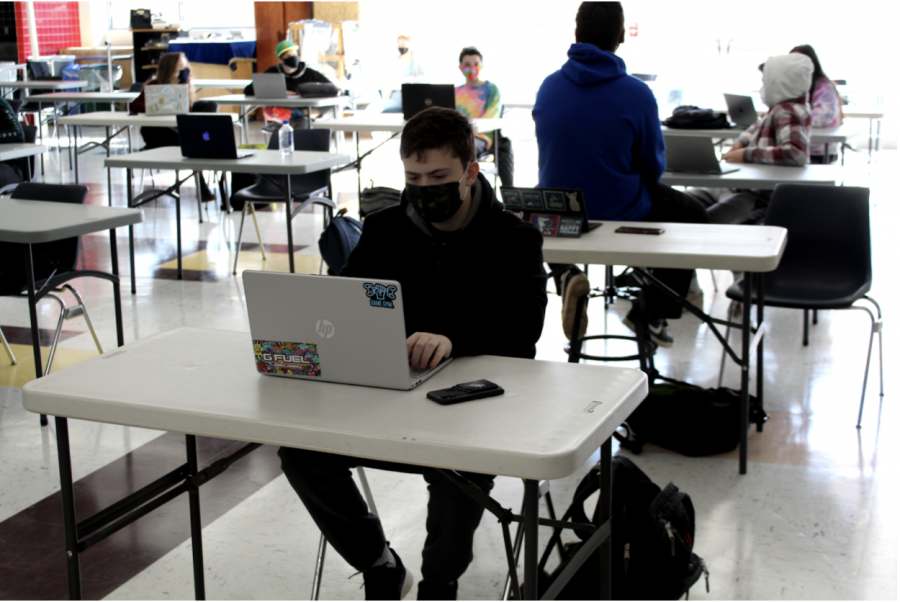Entire high school attends in person school after the graduation of the class of 2021
Freshmen, sophomores and juniors begin to attend in-person school twice a week.
February 4, 2021
Freshmen, sophomores and juniors are now able to learn together on-campus for the first time since the COVID-19 outbreak. The decision to have all three grades return to campus together, which began on Tuesday, Feb. 2, was announced by Dean of Students and Interim High School Principal Roslyn Landy on Jan. 13. This new system was based upon the fact that the seniors graduated and would no longer be in the building.
Junior Elyon Topolosky expressed his excitement about attending school in-person with freshmen and sophomores as it would enable him to spend time with the friends he has in those grades.
“Yeah, there was a really big difference [with three grades being in-person] because the beauty of JDS is that I’m not just friends with people in my grade I … [have] friends in all the grades,” Topolosky said.
The addition of an extra grade also allowed some teachers to see students in grades that they do not typically teach.
“It was nice to see the 11th graders in the hallway today,” history teacher Carl Atwood said. “Since I teach ninth and tenth [grade], I’ve only been coming [in] on the [ninth and 10th grade] days, and it was very nice to see the 11th graders and wave hello to them.”
However, despite these benefits, Topolosky and Atwood both noted COVID-19 related concerns with this change. One of Topolosky’s major areas of concern is the hallways during passing time.
“It was impossible to go through the hallways because it was so crowded and unsafe and I was anxious [about it],” Topolosky said. “… It really felt like we were back in school because everyone was touching and pushing each other.”
Atwood, who taught in one classroom for most of the morning and did not spend as much time in halls during passing periods, still had similar concerns relating to students not following the CESJDS COVID-19 protocols.
“One concern that I had, is that the more we’re in the building, and the more that being the building feels normal, I worry that students will start becoming more and more lax with maintaining COVID safety behaviors,” Atwood said.
In addition to the social and health implications, there are academic ones as well, especially for students learning from home like sophomore Lael Sacho-Tanzer. While she understands the reasoning behind people’s decision to attend school in-person, she believes that, overall, the increase in on-campus learning will be detrimental to students learning from home as a result of the technical difficulties and limitations.
“If we have more [class discussion], then I would deal with it,” Sacho-Tanzer said. “It’s not the end of the world, you can still have a discussion but it’s just easier when everyone can see everybody whether everybody’s in-person or everybody’s on Zoom.”
Topolosky, however, has a different view, believing that increasing on-campus time can be beneficial.
“For my mixed-grade classes, I think it was beneficial, especially my history and genetics class, it was nice that both [juniors and sophomores] were in the building. It felt less empty, [and] we were able to do more group work,” Topolosky said.








